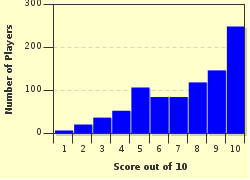Quiz Answer Key and Fun Facts
1. Renowned for his work in early nuclear physics, Ernest Rutherford was born in which country?
2. Sir Alec Issigonis is best remembered as the designer of which of these cars?
3. Which scientist was credited, jointly with John MacLeod, with discovering how to obtain insulin from the human body, thus saving the lives of many diabetics?
4. Sir Henry Bessemer gave his name to the manufacturing process for which product?
5. Jean Piaget is remembered for his work in which scientific field?
6. The C5 electric vehicle was introduced in 1985 by which of these British inventors?
7. Richard Trevithick, a pioneer in high pressure steam engines, was born in which English county?
8. In 1796, Edward Jenner carried out his first experiment which led to a vaccine against which deadly disease?
9. The 'bouncing bomb' was the invention of which inventor?
10. Isambard Kingdom Brunel was a nineteenth century English engineer responsible for many feats of engineering. Which of these is NOT one of his designs?
Source: Author
rossian
This quiz was reviewed by FunTrivia editor
Snowman before going online.
Any errors found in FunTrivia content are routinely corrected through our feedback system.

